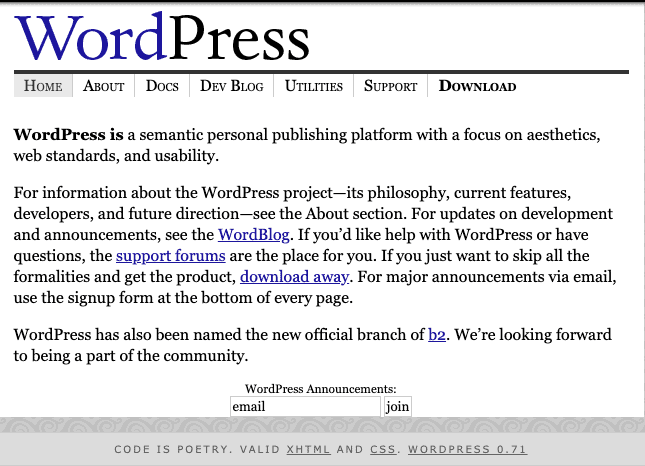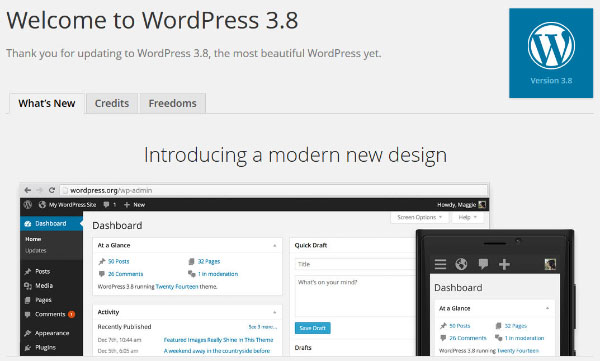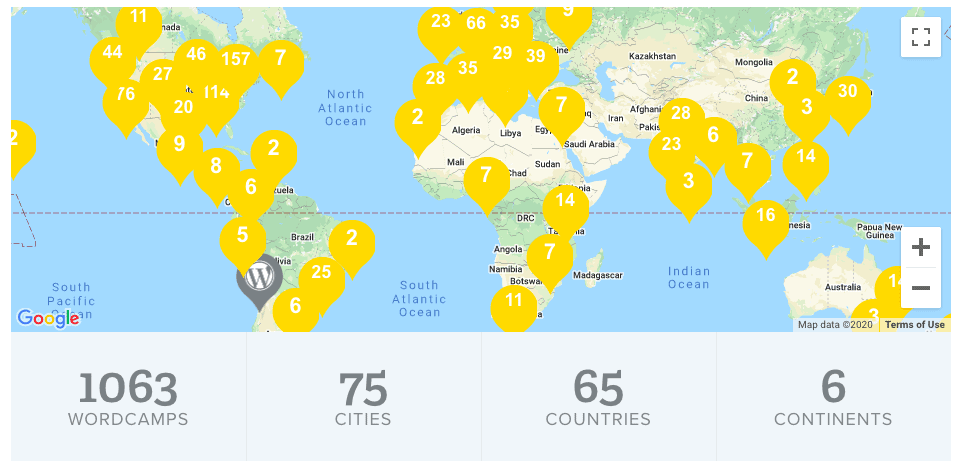
In May 2003, a new open-source platform was born that would change the way we create and manage websites. Its name was WordPress, and its goal was to democratize publishing on the web. Over the last two decades, WordPress has grown to become the world’s most popular content management system (CMS), powering over 40% of all websites on the internet. As WordPress celebrates its 20th anniversary, let’s take a look back at how it has evolved over the years.
2003: The Birth of WordPress
WordPress was created by Matt Mullenweg and Mike Little as a fork of b2/cafelog, another blogging platform. Their goal was to make it easier for users to publish content on the web without having to learn how to code. The first version of WordPress, version 0.7, was released in May 2003, and it included features such as posts, pages, comments, and themes.
2004: The First Major Release
In 2004, WordPress 1.0 was released, which included many new features such as plugins, search, and password-protected posts. This version also introduced the default theme, Kubrick, which became a popular choice for many WordPress users.
2005: The Rise of WordPress
In 2005, WordPress began to gain traction, and the community around it started to grow rapidly. The first WordCamp, a conference dedicated to WordPress, was held in San Francisco, California, in July 2006. This event marked the beginning of a tradition that continues to this day, with dozens of WordCamps being held around the world every year.
2007: The Introduction of Automatic Updates
In 2007, WordPress 2.3 was released, which included a new feature that would make life easier for many users: automatic updates. This feature allowed users to automatically update their WordPress installation with security patches and bug fixes, without having to do it manually.
2008: The Birth of Custom Post Types
In 2008, WordPress 2.9 was released, which introduced custom post types. This feature allowed users to create different types of content, such as products or events, and customize how they were displayed on the website.
2010: The Launch of WordPress.com
In 2010, WordPress.com was launched, providing users with a free hosting platform for their WordPress websites. This made it even easier for users to get started with WordPress, without having to worry about hosting and server management.
2011: The Release of WordPress 3.0
In 2011, WordPress 3.0 was released, which was a major milestone for the platform. This version introduced a new default theme, Twenty Ten, and a new feature called multisite, which allowed users to create multiple websites on a single WordPress installation.
2012: The Rise of Responsive Design
In 2012, responsive design became a buzzword in the web design community, and WordPress was quick to adopt it. WordPress 3.4 was released with a new theme called Twenty Twelve, which was designed to be responsive and work well on all devices.
2013: The Introduction of the Customizer
In 2013, WordPress 3.4 was released with a new feature called the Customizer, which allowed users to preview and customize their website’s design in real-time.
2015: The Arrival of WordPress REST API
In 2015, the WordPress REST API was introduced, which made it easier for developers to interact with WordPress websites using modern web development tools and technologies. This API also opened up new possibilities for WordPress as a platform, allowing it to integrate with other systems and services.
2016: The Rise of Page Builders
In 2016, page builders became increasingly popular in the WordPress community. These tools allowed users to create complex page layouts without needing to know how to code. Some popular page builders include Elementor, Beaver Builder, and Divi.
2017: The Release of Gutenberg
In 2017, WordPress 5.0 was released, which included a new content editor called Gutenberg. This editor replaced the old editor, which had been in use since the early days of WordPress. Gutenberg introduced a new block-based approach to content creation, allowing users to create more dynamic and flexible layouts.
2018: The Growing Importance of Accessibility
In 2018, accessibility became a growing focus for WordPress. WordPress 5.2 included several accessibility improvements, such as better keyboard navigation and improved color contrast. The WordPress community also started to focus more on making themes and plugins accessible to all users.
2019: The Continued Growth of WordPress
In 2019, WordPress continued to grow in popularity, with over 35% of all websites on the internet using WordPress. The community around WordPress also continued to expand, with new WordCamps and meetups being held all over the world.
2020: The Impact of the Pandemic
In 2020, the COVID-19 pandemic had a significant impact on the WordPress community. Many WordCamps and other events had to be canceled or moved online. However, the pandemic also highlighted the importance of having a strong online presence, which led to increased adoption of WordPress as a platform.
2021: The Future of WordPress
As WordPress celebrates its 20th anniversary, the platform shows no signs of slowing down. The WordPress community is actively working on new features and improvements, such as full-site editing and improved performance. WordPress also remains committed to its core mission of democratizing publishing on the web.
In Summary
Over the last 20 years, WordPress has evolved from a simple blogging platform to a powerful content management system that powers millions of websites around the world. Along the way, WordPress has introduced many new features and improvements, and the community around WordPress has grown and become more diverse. As we look to the future, it is clear that WordPress will continue to play an important role in the web development landscape, empowering users to create and share content online.
Are you looking for a WordPress design company? Contact 1Brand Design today for a free quote.



